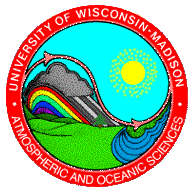 |
|
Abstract In 1960, images of the atmosphere captured from our nation's first weather satellite changed our understanding of large-scale weather systems. Since then, scientists developed satellite data for use in a variety of meteorological studies, and operational forecasters have assessed satellite imagery and products in confronting a myriad of analysis and prediction problems, from determining the speed of the jet stream, temperature of the surface, and concentration of ozone, to finding areas of dust, smoke, and volcanic ash. Fifty years later, new satellite missions are expected to bring an increased number of observations of our quick-evolving atmosphere. The new technology that accompanies the NASA National Polar-orbiting Operational Environmental Satellite System (NPOESS) Preparatory Project (NPP) and Geostationary Operational Environmental Satellite R-Series (GOES-R) will provide satellite imagery and products on a spatial scale down to 400 meters and a temporal scale of down to 30 seconds. Observations of this resolution will allow meteorologists to study unique meteorological phenomena in great detail, likely leading to breakthroughs which will increasingly bring data collected from satellites back into the warning process, as well as improve forecast decisions. This talk will discuss ways in which satellite imagery and products can be used within the operational environment today and in the future. Examples telling of the utility of these scientific and technological advancements, courtesy of the Cooperative Institute for Meteorological Satellite Studies' (CIMSS) Satellite Blog (updated frequently at http://cimss.ssec.wisc.edu/goes/blog), will be shown pertaining to recent weather events. |
| Updated 18 December 2011 web@aos.wisc.edu | Department of Atmospheric and Oceanic Sciences University of Wisconsin-Madison |